Post by Head Moderator on Jan 31, 2012 23:42:51 GMT -5

Gems and precious stones of all types can be found throughout the Obsidian Heart Kingdoms. Listed here are the gemstones that can be found in the kingdoms, including some of the rarer types only found in certain regions.
Precious: Precious stones include diamonds, sapphires, emeralds, and rubies.
Semi-precious: Semi-precious stones include tourmaline, garnet, peridot, amethyst, jade, and aquamarine.
Organic stones: Jet, coral, amber, pearl
Agates
Banded variety of chalcedony that occurs in every possible color and shape. Very common everywhere. Agate is often used to make arrowheads.
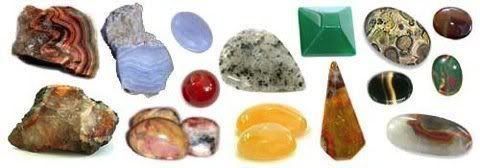
Amber
Amber is translucent fossilized tree resin (from conifers), a natural hydrocarbon that comes in many colors, including yellow, reddish, whitish, black, and blue. Amber may often have small insects caught inside of them such as gnats and flies, and even spiders. They can be found everywhere.

Amethyst
Amethyst is a form of the mineral quartz, and is a relatively common gemstone. Amethyst is usually purple, but can range in color from pale lavender to a very deep, reddish purple to a milky color to green. Deeper-colored amethysts are more highly valued.

Aquamarine
Aquamarine is a transparent, light blue or sea-green stone that is porous. Sea-green stones are prized more than light blue.

Pua Stone
Pua Stone has an extraordinary blue appearance similar to the color of the ocean in the tropical seas around the Islands where it is found. This precious stone is commonly mined near volcanoes by the sea in the islands. This gemstone cuts cleanly under hard pressure and breaks into clean sharp lines that will cut glass and deeply score metals. Pua stone is the most commonly used gemstone in expensive jewelry and is used as a common coinage throughout the kingdoms. Smaller specimens are worth up to ten gold and larger stones can reach prices of 5,000 gold. These gems in either a worked or natural form will accept low-level magic, but anything higher will shatter the stone, sometimes injuring the mage.

Bloodstone
Dark green to greenish blue variety of Chalcedony dotted with small, red, blood-like spots. Also called heliotrope.
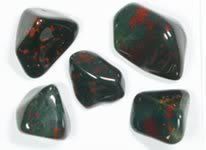
Cat's Eye
Cat's eye is a yellow to green-yellow to gray-green stone with a bright, pupil-like slit that seems to move slightly as the stone is moved.
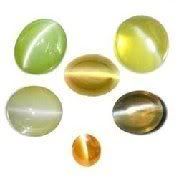
Chameleon
A clear, crystalline fancy stone that grows in five-sided spires. Chameleon, in its natural form is almost worthless, and is known as an “impersonator stone.” Even when these gems have been worked they are still worthless. However, when placed among other precious or semi-precious stones for a week, the chameleon stones will slowly start to change color until it resembles the other stones. Once separated for an equal amount of time, the stones will return to their true color. The shape of the stones will never change. Disreputable gem dealers stock large amounts of these worthless stones. These stones are cut into all of the most common shapes. They place these worthless stones among other valuable stones to sell to unwary buyers. One way to spot chameleon stone is to hold the suspect stone up to a bright light and look at the color that passes through the gem. True valuable gemstones will cast a small band of light in their color with sharp edges. A chameleon stone no matter the cut or the color will throw a muddy and blurred band of light. Another, but lengthier way to determine the stones true worth is to separate them for about a month and see which stones change colors. Another test, but one that is labor intensive is to test the gems' hardness. Chameleon stone will not cut glass, and will not hold magic, both obvious flaws. Once chameleon stones are discovered, they are usually tossed in the trash, given to children to play with, or attempts are made to pass the chameleon stone as true gems.
Charoite
The colors range from bright lavender, violet and lilac to dark purple with swirling patterns of black Augite, transparent crystals of microcline feldspar, and/or orange Tinaksite. Charoite is unusual looking with its strange looking spirally strands of fibrous material. It is used extensively in jewelry and as an ornamental stone carved into boxes, bookends and vases.
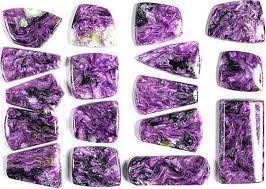
Citrine
Citrine is a rare, yellow type of quartz, a semi-precious stone that ranges in color from pale yellow to orange to golden brown.
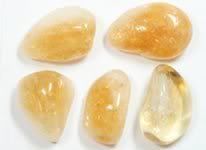
Coral
Coral is an animal that grows in colonies in the ocean. Coral ranges in color from pale pink (called angelskin coral) to orange to red to white to black. The most valued colors are deep red (called noble coral) and pink.

Dalmation Stone
This rock is very common, and is easily dyed. It is white and covered with black spots that give it it's name. Commonly used in inexpensive jewelry designs, and also takes magic readily.
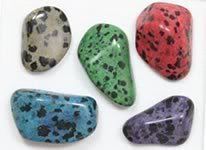
Desert Rose
The desert rose is a rosette formations of minerals with sand inclusions. The 'petals' are crystals flattened and fanning open along characteristic gypsum cleavage planes. Found in the desert and salt flats, these are prized for their beauty and in some cases, have even been worked into large jewelry pieces for nobles and royals.
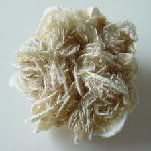
Diamonds (Colorless, Yellow, Orange, Black, Red, Pink, Green, Blue, Purple)
Diamonds are precious, lustrous gemstones made of highly-compressed carbon. Diamonds are one of the hardest materials known. Colors of diamonds range from colorless, yellow, orange, to almost black. Rarer colors are red, blue, green, and purple; these colors (called fancies) are quite valuable. Canary diamonds have a deep yellow color.

Dinosaur Bone
Crystallized dinosaur bone found all over the kingdoms.

Dragon's Egg
These very rare and precious stones are normally found as a glossy, black, brown to grey stone with bright flakes of white crystal inside that when exposed to sunlight will reflect the colors of the rainbow. These gems are formed in large violent volcano upheavals. These gems are normally found in high mountain rivers and streams and are normally glass smooth, and look as if they are cracked, or "hatched" as it is called. Cutting or working these stones will subtract from its value greatly as doing so will shatter many of the small prisms inside the stones. When exposed to bright magical light, these stones will glow for up to five days, acting as small lamps. Large specimens of this stone are used by the trading company in place of heavy coins. The largest dragon egg ever found was the Imperial Grand Dragon. This stone was valued at an excess of 50,000 gold. The Imperial Grand Dragon has long disappeared and is believed to be either held in secret by one of the kingdoms or kept by some other powerful entity. These stones will scratch glass and accept magic readily.
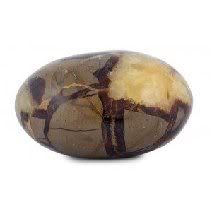
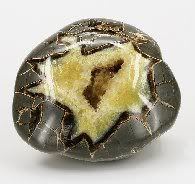
Dunestone
These lovely rocks look like the sandy dunes of the Thanes Desert and are found throughout the desert itself and prized by mages as they take enchantments related to weather, heat and fire very well.

Duon
A dull flat black, round, semi-precious gemstone found in sedimentary layers found often on the floor of old rivers or sea bottoms. Duon is commonly referred to as a “murder’s stone.” Duon value in its natural state ranges from 5 to 100 gp. These gems will not cut glass and will shatter easily if dropped on a hard surface or struck sharply. Value of the worked stones is almost triple of the natural stones, because of the stones' abilities. These rare stones have the ability to detect the presence deadly toxins such as poisons. By dropping one of these stones in a suspected liquid, the stone will dissolve completely if it encounters any toxins. The gemstone will not neutralize or identify exactly which toxin. This gem is a mainstay of the royal courts. There are many fake duon gemstones that are sold as genuine to the unwary, usually at a low price. This gemstone will not cut glass, and will not accept any magic.
Elemental Stone
This beautiful multi-colored stone is said to have absorbed the knowledge of the universe and benefits are gained by anyone near it. The colors of this stone represent the harmonious balance of fire, earth, metal, water and wood. It is extremely rare and very expensive.
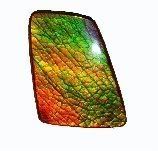
Emeralds
Green variety of beryl. Deep green is the most desired color in emeralds. The paler the color of the emerald, the lesser its value. Pale emeralds are not called emeralds, but "green beryl". Emeralds are most often found in the jungles.

Fey Cross
This is a very hard to obtain rare gemstone. In the center is a cross that is a natural part of its crystalline structure
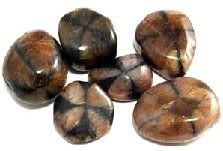
Flashstone
Flashstones are found as smooth-surfaced, asymmetrical (but roughly spherical), fist sized stones. They are extremely durable- cutting one typically wears out several sets of metal tools. Because of this, they are usually worn whole or simply split in half and set with pronged (claw) settings. No stones significantly larger or smaller than approximately 3 to 5 inches in diameter have yet been found. Normally a deep, pleasant, sea water green, they periodically blaze with a sparkling, flashing light called fireflashils. At random, flashstones seem to absorb some small amounts of heat, light, and vibratory energy from their surroundings. They then discharge this stored energy periodically in a sparkling flash. They usually flash about once per hour, but rates vary from stone to stone for no known reason. Their discharge is silent and cold; the sparks given off are few and do not carry a strong electrical jolt. Wands or rods of lightning and other magical items that discharge electricity fashioned with flashstone chips at their ends are more effective. Powdered flashstone is a prized ingredient in spell ink The gemstones are also often used for warning lamps or night beacons by the wealthy.
Flint
Flint is usually dark-gray, black, or deep brown in color, and often has a waxy appearance. It occurs chiefly as nodules and masses in sedimentary rocks, such as chalks and limestones. It can be used to craft daggers, arrowheads, and is of course a necessary item to start fires, as in flint and steel. It is rarely, if ever used ornamentally.
Flower Stone
These stones display crystals that are in a flower pattern and are normally found in a river valley.

Fluorite
Fluorite is a translucent to transparent, relatively common mineral that occurs in a great variety of colors. including blue, violet, purple, red, pink, white, colorless, yellow, green, brown, black, and multicolored bands. An interesting aspect of the gemstone is its fluorescence in ultraviolet light (various varieties fluoresce red, blue, green or yellow light). In fact, the word "fluorescent" is derived from fluorite. Fluorite's color, has been known to fade with prolonged exposure to sunlight. Fluorite is relatively soft stone, (hardness 4) easily scratched by a knife and even by quartz. For this reason, fluorite is not commonly fashioned into gems, since it is not durable enough to maintain an unblemished polish with normal jewellery use.

Garnets (Green Garnet is rare)
Garnets are any of a group of semi-precious silicate stones that range in color from red to green (garnets occur in all colors but blue). Garnets can be mined anywhere.

Hematite (Rainbow Hematite - rare)
Hematite is one of the most common minerals. The color of most red rock, such as sandstone, is caused by small amounts of Hematite. It may also be responsible for the red color of garnet, spinel and to some extent, ruby. Rainbow hematite has a iridescent quality displaying numerous colors. Bloodstone is also a type of hematite. Hematite is found all over the kingdoms, but there is only ONE mine that has rainbow hematite, in Kyngfeld. Legend states that hematite is formed from the droplets of dragon's blood. Some hematite is actually magnetic.

Jade
Jade is a semi-precious stone that ranges in color from green to white to lilac to brown to almost black. Translucent jade is more highly valued than opaque jade. Jade is found all over the kingdoms.

Jasper
An opaque chalcedony coming in a variety of colors such as green, leopard jasper (leopard spots), poppy jasper (red rings), and yellow.

Kitris
This semi-precious stone is common throughout Obsidian Heart and is mined from deep sedimentary layers. They come in a variety color ranging from clear to a rich black and many bright colors. These gems are always a solid color and will not cut glass or score metal and will shatter under pressure. They are easily worked and are often used in place of more expensive gems. The ancient name of these gems means “keeper of light” and is the common name of these gems. The most common use of these gems is to enchant them to emit light, a task that they accept readily. Any light emitting spell cast upon one of these stones will emit light for twice the normal time as a usual light spell. A mage can enchant up to six stones per person by a mage. By touching one of these stones and speaking the command word, each of these stones can be used as needed. Each of these gems will emit a faint light for 5’ radius for up to eight hours. Each stone can be charmed for the owner’s lifetime. Upon the death of the owner, these stones can be charmed for another person. Once charmed, these stones sell for about 600 gp each and sell for about 20 gp without any charms.
Labradorite
Labradorite is a fairly abundant grayish mineral that has brilliant flashes of color (usually green, blue or red) after it is polished.. The crystals are transparent to translucent. There is a darker variety of labradorite (called "black moonstone") which has bluish inclusions.
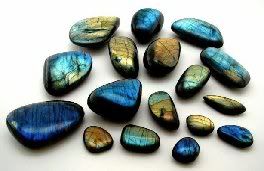
Landscape Stone
The exceptional looking piece of stone looks like the evening sun setting behind a mountain range. It has a greenish cast with shades of brown, golden yellow, red and blue veining. Because the minerals in this stone are of varying hardness, it is difficult to polish.

Lapis
Lapis lazuli, a beautiful royal to navy blue, is a rock composed of a mixture of several different minerals. It can be found anywhere in the kingdoms.

Lorelei
A green precious stone that comes in near perfect tetrahedron spires. These gems are found near the ancient, extinct volcano in Bryony and are always mined from the ground here. Values range from 5 to 20 gold for smaller specimens to about 6,000 gp for really large unflawed pieces. A variant of this gemstone known as striped lorelei has bright blue bands running parallel through the stone. Unflawed, these gems are usually worth double the normal price of lorelei. Plain lorelei will accept all levels of magic but striped lorelei will not accept any magic and usually destroys the stone when attempted. Lorelei will not cut glass or score metal.
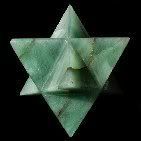
Malachite
Malachite is an opaque semi-precious stone, a basic copper carbonate. The appearance is generally vivid green to bluish green and is usually seen with bands in several shades of green. The beautiful green color comes from the copper contained in the stone; it is about 57% copper and is usually found in copper mines. The transformation of copper into malachite occurs relatively quickly. Bronze objects have been found at ancient sites partially or wholly converted into malachite.

Marble
Marble is a colorful stone that is often used in construction. Unlike most other building materials, marble often is used for the external facade of a building and especially in columns and statuary. Colors of marble range from browns to gray to white, often with interesting patterns of impurities within it. This rock takes well to smoothing and polishing which gives it an exquisite look for flooring in the more opulent villas.
Mawa Nut
This is a unique gemstone that is created within the nut of the mawa tree which grows in southern areas of OH. It is rare, as not all mawa nuts have the opalescent gemstones within them. One can usually tell if it holds a stone by the weight of the nut in the hand. Rarely is the gemstone dug out of the nutshell, it is normally polished and worked while still in the hard shell.
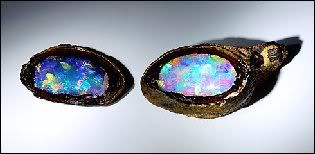
Moonstone
Moonstone is a semi-translucent stone. It is usually whitish-blue, but can be colorless, yellow, orange, gray, or even reddish or rainbow.
Mother of Pearl / Abalone
Mollusks create mother of pearl to protect themselves. In addition to forming part of the shell, mother of pearl also insulates mollusks from bacterial infection, and reduces irritation from organic material which drifts into the shell. Irregularities often form in the mother of pearl as a result of irritation. If the irritation is extensive enough, the mollusk will form a large bump, prized in the human world as a pearl. Only the outer layer of the pearl is covered in mother of pearl, which is why it is important to care well for pearls so that they do not crack, revealing the source of irritation beneath. It is an ear-shaped shell often used for making ornaments because of its iridescent and colorful pearly interior. The swirling, interlaced colors include green, blue, cyan, purple, pink, and cream in abundant variety of shades and nuances.


the iridescent cream-white shell is referred to as the mother of pearl,
the predominantly green shell as the abalone
Obsidian
Obsidian is a natural volcanic glass that is usually black, but is occasionally red, brown, gray, green (rare), dark with "snowflakes," or even clear. It forms when lava cools quickly. It is fairly fragile, just slightly harder than window glass. It scratches very easily and sharp blows are likely to crack it. It is sometimes referred to as "Black Velvet".

Opals (Blue Opal- rare, Black Opal & Harlequin - super rare)
Any opal lacking a play of colors is merely common opal. Colorful opal has various names such as cherry opal (red), flame opal (streaks of red/orange), Gold Opal (gold), harlequin (triangular shapes within), sky opal (misty blue), lemon opal (yellow), milk opal (milky white), moss opal (inclusions look like moss), rainbow opal. All opals are found in the mountains.

Pearls, Saltwater (White, Cream, Black, Pink, Grey, Green, Abalone)
Cultured pearls come in a wide range of colors. They should be relatively free of skin blemishes. The more perfectly round the shape the better. ( Except for abalone pearls which are notoriously irregularly shaped. )
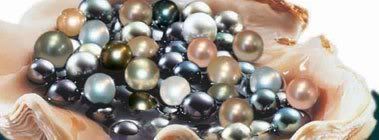
Pearls, Freshwater
Freshwater pearls are irregularly shaped and come in various colors. They are often referred to as "baroque pearls".
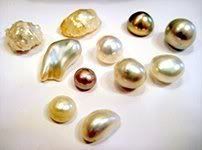
Peridot
Peridot is a yellow-green semi-precious stone with an oily luster; peridot is a transparent, green form of olivine. Peridot exhibits double refraction; when you look through the stone, things appear double.

Petrified Wood
Petrified Wood is a fossilized wood, a type of fossil, in which the tissues of a dead plant are replaced with minerals (most often a silicate, like quartz). The petrifaction process occurs underground, when wood or woody materials suddenly become buried under sediment. Petrified wood is often used to create runestones.

Quartz
Quartz is a crystalline mineral that come in many forms, including amethyst, aventurine, citrine, opal, rock crystal, tigers eye, rose quartz, smokey quartz and many others.

Quartz, Rutilated
Used to make soulstones.
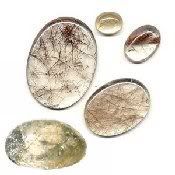
Quartz, Singing
Singing Quartz has a clear sweet resonance when gently allowed to touch another. The singing crystal expresses the spectrum of sound and is compatible with the spectrum of light.

Rosetta
It is commonly found in the form of stalactites and stalagmites in the caves of Bryony. It is often carved into figurines or boxes while the tubular stalactite formations are often sliced for use in jewelry. Fine gem quality crystals are sometimes cut into gemstones for use in expensive jewelry, but the more common grade is used extensively in silver and gold jewelry. The crown jewels of Bryony feature some very large specimens of finely cut rosetta.

Raudanas
This very rare precious gemstone is one of the hardest gems found in the OH, similar to a diamond. This stone comes as a rainbow of fiery colors that glows faintly in absolute darkness, and is sometimes referred to as "mystic fire". Raudanas will cut glass easily and will deeply score metal. Loose stones vary in price range from 10,000 gp to 25,000 gp, depending on size. Since ancient times, large specimens of this gem have been set into swords' pommels and upon other edged weapons and then enchanted in a way that is lost today. The gemstone’s natural magical abilities lend themselves to the effectiveness of the weapon it is placed on when properly enchanted. These ancient weapons will glow a faint red, pulse with the wielder’s heart rate, and will hit their opponent with a +1 bonus to both damage and accuracy. Some of the greatest weapons are charmed to have a +3 to a +10 bonus to hit the opponent of the wielder. Some of these ancient weapons were also enchanted to protect the wielder from certain levels of spells. Legends speak of some of these weapons having the ability to do an additional four points of damage to a particular creature each attack. Removal of the enchanted stone from such a weapon will cause the weapon to shatter and the gem to explode in a fiery explosion, doing 20d4 points of damage to everything within twelve feet. Enchanted raudanas gemstones bring three times their normal value plus the value of the weapon. There are no unenchanted raudanas stones that are not placed on edged weapons. Very rarely are raudanas stones found in the mines now. The rumor of a vein of these stones found in a mine or a single one of the enchanted weapons has brought armies to battle.
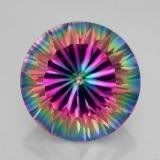
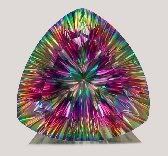
Rubies
Rubies are distinguished and known by all for its fiery red color. Beside for its color, it is a most desirable gem due to its hardness, durability, luster, and rarity. Transparent rubies of large sizes are even rarer than diamonds. Transparent, flawless rubies exceed all other gems in value. There are blood rubies (blood-red with a hint of blue), and cat's eye rubies (exhibiting the cat's eye effect).

Sailor's Stone
This pale blue and white striped stones are commonly referred to as the “sailor’s stone.” Smaller specimens of this gemstone are often carried by sailors who worship sea deities that are said to favor these stones. Some have remarked that this is probably a way for these poor churches with small followings to increase both the numbers of the faithful and the coffers of the churches. These gemstones will float upon any liquid and will always point in the direction of the current, if one is present. If used in a small container like a cup or bowl, the stone will always point in the direction of the nearest body of water. Due to the properties of the gem, the desert dwelling nomads have begun to desire these stones in large numbers. Ancient legends tell that these stones are the tears of drowned sailors. These stones are often found washed upon beaches along large rivers and oceans and have never been found in the ground. These stones are worth from 1 gp to 5,000 gp, depending on the clarity, and size of the gem. Several sea going cultures refuse to cut or work these stones, for fear of injuring a drowned relative. These stones will score glass, and will not accept any magic. There are no known variants of this gem.

Salt Crystals
While large crystals of salt harvested from the salt flats are not used for jewelry they are still important crystals and are often carved and placed in temples and chapels, or used for enchantments. Some gourmet chefs in royal courts swear by plates of thin rose colored salt used to serve their meals upon. Others enchant them to glow with a warm light that is said to provide a soothing atmosphere to the area.
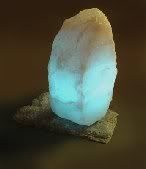

Sapphires (Star Sapphire)
A blue form of corundum (the red form is a ruby). Star sapphires exhibit a starburst and are rare and very desired.
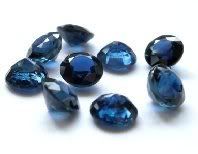

Serpentus
Serpentus is a translucent, waxy mineral; a silicate of magnesium. It occurs in a variety of colors including light to dark green to whitish green, red, brown-red, brown-yellow and white. Serpentus gets its name from the resemblance of its color and markings to the skin of a snake, and it may refer to any of the 20 minerals belonging to the serpentus group.

Snowflake Obsidian

Starstone
These meteorites come from broken asteroid fragments or an exploded star that landed billions of years ago. Starstone, as it is called, is composed of iron, nickel and small amounts of cobalt and classified as a fine octahedrite iron meteorite. Some other minerals that may be found in the meteorite are chromite, deabreelite, enstatite, kamacite, taenite, troilite or tridymite. Lines and patterns are the result of cooling in outer space over billions of years.

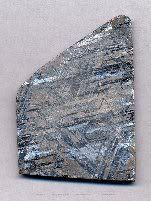
Sunstone
Sunstone is a type of feldspar that contains abundant inclusions of minerals such as mica or metals that sparkle with a luster in reflected light.
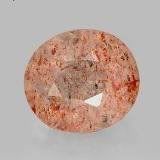
Tiger's Eye, Hawk's Eye
Both are types of quartz with fibrous inclusions.

Topaz
Topaz is a very hard gemstone that ranges in color from brown, to yellow to blue. Imperial topaz is golden orange-yellow topaz; it is the most valuable topaz.

Tourmaline
Tourmaline is the name given to a group of related, transparent to opaque, minerals all having essentially the same crystal structure but varying considerably in chemical composition and in some of their physical properties. Specific names have been given to tourmalines of specific colors or color combinations such as -
Rubellite for pink to red shades, Indicolite for blue-green shades, and Watermelon for tourmalines showing concentric colors of both pink and green shades.
Elbaite and Liddicoatite occur in a wide range of colors and shades including green, yellow, blue, pink to red, colorless and brown.
Schorl is usually black, dark blue or dark blue-green. Uvite is usually black, brown or green. Buergerite is dark brown to black.
Dravite is usually brown to black, but it can be found colorless Achroite is colorless too.
The color in tourmaline is due to the presence of metal ions in its crystal structure.

Turquoise
Turquoise is a non-translucent, porous semi-precious stone. Turquoise ranges in color from robin's egg blue to green. Over the years, oil from your skin is absorbed by the stone and it will change color slightly. Turquoise is found in the Thanes Desert.

Winterstone
A stone in a combination of browns, blacks, grays and white colors, each piece is different. When cut the stones often have a scenic appearance and look like forest trees or hill sides in winter.

Zanon
This pale, purple, semi-precious stone is common throughout OH. Commonly mined from the floor of old seas, or found in ancient river beds. Zanon is commonly worked into all forms of jewelry and will readily accept all levels of magic. This stone is commonly referred to as a “Mage’s Apprentice” stone due to its low cost and ease of magic acceptance. Aspiring mages are often taught how to place magic into something using these stones. Price range is 1 to 300 gp. There are two variants of this gemstone, called silver and starbrittle. Usually worth double the value of normal zanon, both these have large amounts of silver or gold inside them. The silver has a bright cluster of silver in the center. The starbrittle variant has flakes of gold and sometimes silver as well throughout the stone. When imbued with several levels of magic, the starbrittle variant is of the most value to mages who travel. When these stones are hurled against a hard surface, these stones will explode in a bright flash of blinding light. This explosion showers all within 5’ with sharp shards of rock, and does 1d4+1 points of damage per level of magic placed into them. All zanon gemstones will cut glass and will score soft metal.

Zircon (blue zircon desired)
Zircon is a very popular gemstone, and gems of all different colors are cut from Zircon. Zircon crystals are also popular among mineral collectors, especially collectors specializing in crystals.









